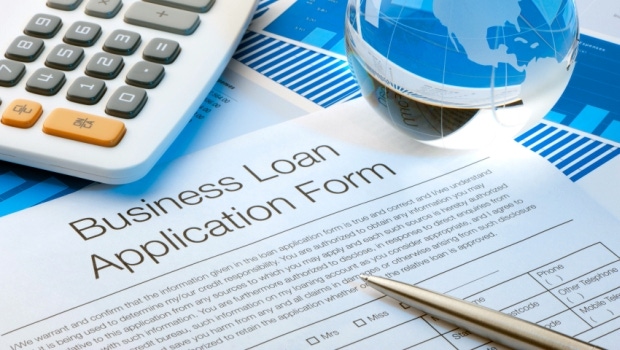Understanding the Self-Storage Lending Market: Obtaining a Mortgage, Locking In Rates and More
Current interest rates for self-storage loans are at historic lows, so it may be worthwhile for investors and owners to explore their lending options. Here’s insight to obtaining a mortgage, locking in rates and more.
November 15, 2016

By Anthony and Gerard DiMarco
Lenders are back after the credit crunch of a few years ago. Since the financial crisis, the capital markets began to slowly re-emerge for self-storage lending on a wide scale. Today’s market, with historically low interest rates and sound underwriting principals, is the strongest it’s been in years. Lenders are eager to provide long-term, fixed-rate, non-recourse loans with 30-year amortizations for storage facilities. The market has improved dramatically!
There are numerous lending platforms and options available for storage owners, such as conduits (commercial mortgage-backed securities), life-insurance companies, credit unions and traditional banks. There’s also a wide range of products and features, including bridge lending, short-term floating-rate debt, interest-only, construction/expansion loans, and flexible prepayment options.
With a healthy lending environment and all these choices, it may be worthwhile for investors and existing owners to explore. Here’s insight to obtaining a mortgage, locking in rates and more.
Obtaining a Mortgage
There are two major components lenders review when analyzing a loan request: the guarantor and the property itself. Most lenders look for a borrower to have a credit score of at least 600 as well as sufficient net worth. Even though many self-storage loans are non-recourse, lenders still look for these minimum requirements. On the property side, most lenders require a minimum loan amount of $500,000, a minimum debt-service coverage ratio of 1.25x, and paved facilities.
There are numerous aspects to self-storage properties that make them unique compared to other asset classes. Having an understanding of what lenders prefer to see in a property can be helpful in assessing your potential for a new loan or refinance. The type of loan and benefits of the mortgage depend on the checklist of items a lender reviews. Some of the key components that determine the rate and terms include:
Property quality
Borrower experience, equity and liquidity
Loan-to-value (LTV)
Financial and occupancy trends of the property
Infrastructure quality, such as asphalt, utilities, roofs, etc.
The best-case scenario from a lender’s perspective is a high-quality facility with an experienced borrower. However, most lenders are willing to look at all types of locations regardless of their quality, especially if there’s a “story” to be told. For example, based on a recent buyer’s qualifications and track record, we were able to obtain financing by showing the facility was being mismanaged and in need of a new owner to improve deferred maintenance items, reduce expenses and add occupancy. Generally, a few negative aspects don’t eliminate a property as a candidate for financing.
Locking in a Rate
Interest rates are at all-time historic lows, so it’s a great time to fix them for the long term. We recently locked in a 10-year, fixed-rate deal at 3.9 percent.
On loan requests of at least $1 million, most lenders offer 10- to 15-year fixed rates with payments based on 30-year amortization schedules. For most acquisition loans—and the refinance of high-quality facilities—lenders will even offer interest-only for up to three years on a 10-year deal. A long-term fixed rate can help eliminate market rate risk for an entire decade and create stability regarding debt repayment. If your loan request is below $1 million, most lenders can still provide five- to seven-year fixed rates with competitive pricing.
For the most part, refinance and acquisition loans are very similar. For a qualified property, both would feature a maximum LTV of 75 percent, the potential of a 10-year fixed rate, and amortizations up to 30 years. The main difference comes down to seasoning and how quickly a refinance is requested.
On a purchase, assuming the loan meets sufficient debt ratios, a loan up to 75 percent of total acquisition costs is available. On a refinance, most lenders look for at least two years of ownership and seasoning before they’re willing to offer 75 percent of the property’s market value. If a borrower is seeking a refinance within two years of owning the property, lenders will focus on the purchase price paid plus the amount of value added and capital investments to determine the property’s maximum loan amount.
Funding an Underperforming Property
Over the past few years, with the strong resurgence and variety of lending platforms in the market, programs have come available for properties in need of stabilization. Lenders are willing to offer floating and short-term lending for borrowers seeking flexibility, including interest-only. These programs are a perfect fit for properties in need of a turnaround or guarantors seeking limited to no prepayment penalties based on their short-term goals. With the interest-only option, a borrower can buy a facility, perform the necessary improvements to increase value, and then refinance into a long-term, fixed-rate loan once the property is stabilized.
Current interest rates for self-storage loans are at historic lows. Well-qualified properties and borrowers are seeing 10-year, non-recourse, fixed rates in the 4 percent range. With this opportunity, it may be worthwhile to review your portfolio’s financial position. In addition to long-term fixed rates, lenders can offer flexible rates and terms to fit a borrower’s specific strategy.
Anthony J. DiMarco and Gerard D. DiMarco Jr. are managing directors for Security Mortgage Group LLC of Rochester, N.Y. The firm has provided commercial and self-storage loans since 1989. For more information, call 585.423.0230; visit www.securitymortgagegroup.net.
You May Also Like





